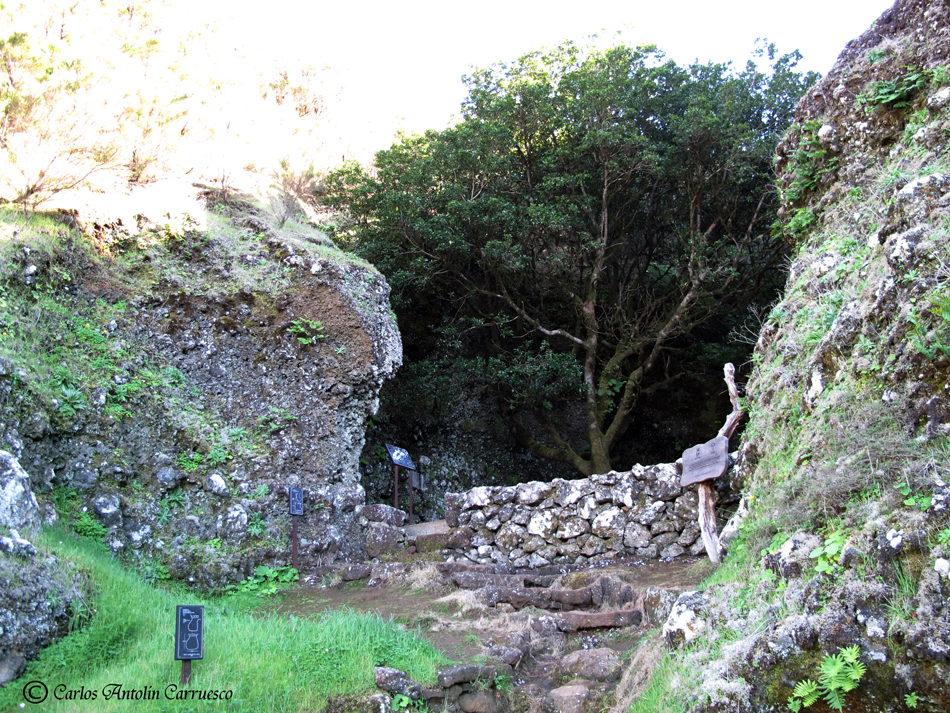It is often fascinating to discover some of the remedies and answers to problems that can be found by looking at the past. If we look carefully, we often find answers to many present day problems, and how our ancestors dealt with the inconveniences of life. I discovered this recently when looking at a tree on the small island of El Hierro.
A visit to the enchanting island of El Hierro is not complete without a visit to see the Stinkwood or Smelly tree (Ocotea foetus), which is native to the island. The tree is evergreen, a member of the laurel family, and is threatened due to the loss of habitat in the areas where it thrives and, I suspect, its pungent aroma. Yes, it can be smelly, hence the name, because the tree is rich in essentials oils. These oils give off an unpleasant odour to the wood when cut, but don’t let this part of the story put you off. After all, stinky or not, this tree does have an interesting story to tell…
The Stinkwood tree was sacred to the ancient inhabitants of the small Canary Island of El Hierro, the Bimbaches, who called it the Garoe. Legend states that the Garoe assured the life of the Bimbaches, because it provided them with sufficient water to ensure their survival. Remember, this was not a time when the locals could pop into the local shop and buy a large bottle. The Canary Islands are visited by the trade winds and, since water was so scarce, the little water that was available to these ancient islanders were from the clouds that condensed on the branches of the tree. It is said that water that dripped from this tree was led to a hole from which the Bimbaches took their water supply.
The original Garoe tree was destroyed by a storm on the island, but in 1957 a replacement tree was planted in the same location as the original tree. Legend or not, the same principles as deployed by these ancient people are still just as relevant to fulfilling islanders need for water today.
Let us now move to another Canary Island, Fuerteventura, where similar principles for catching water are still used. The Fuerteventura Government has been collecting mist for the last year or two, and this new technology has already collected over 33,000 litres of water. Mist collectors use humidity from the trade winds that blow across Fuerteventura, and extract water from mist and fog to create a sustainable water supply. Meters fitted to the mist collectors show around 6,500 litres of water are collected each month during the trade winds season.
So, how is this done in Fuerteventura without the assistance of the Garoe tree? This simple technology uses mesh placed on vertical structures in high mountain areas that intercept mist and humidity that blows across them, and water droplets fall into storage tanks. These mist collectors use water from sea mist or clouds to support the reforestation of endemic or specific species of plants and trees, which will help plant habitats to recover by providing moisture for the soil and improve the quality of the environment and landscape.
It is both a humbling and fascinating thought that technology and processes used by the ancient people in the Canary Islands are being brought back into use today in an effort to rectify damage caused to the environment over many centuries.
If you enjoyed this article, take a look at Barrie’s websites: http://barriemahoney.com and http://thecanaryislander.com or read his latest book, ‘Footprints in the Sand’ (ISBN: 9780995602717). Available in paperback, as well as Kindle editions.
© Barrie Mahoney





